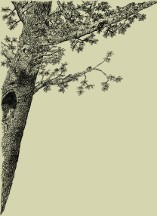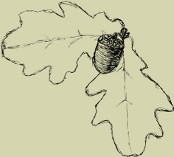42 41 40 39 38 37 36 35 34 33 32 31 30 29 28 27 26 25 24 23 22 21 20 19 18 17 16 15 14 13 12 11 10 9 8 7 6 5 4 3 2 1
Zeszyt 31 (2000)
Accuracy of angle joints in windows in the industrial condition with use of SPC method has been tested. The method of control of mean clearance of mortices and tenons of joints was also elaborated and applied in production of windows. Control was achieved by using exchangeable washers under mills and supported by a computer program written for this purpose.
Key words: window sill, fitting, angle joint, fork, mortice, tenon
The dowel corner joint in case furniture in which pine wood was a material of joint members was investigated. The effect of variable dimensions of the joint: the dowel diameter and the depths of dowel embedment in the face and the edge member, on stresses in the joint were determined. The finite element method was applied assuming the three-dimensional state of stress.
Key words: dowel joint, corner joint, case construction, glue line, finite element method, stresses
The influence of joint dimensions on the bending strength and stiffness of dowel corner joint was investigated. Factors such as dowel diameter, depth of dowel embedment and dowel spacing were considered. The regression functions for the strength and stiffness of the joint were calculated.
Key words: dowel joint, corner joint, bending strength, stiffness, beech wood, regression formula
A study was performed on the creep of wood sample bent across the brains and simultaneously asymmetrically moistened in the tension zone. On the basis of the linear dependence of the deformation on the bending stress, the value of mechanical stress needed to counteract the wood swelling was determined. The values of the mechanical stress obtained in this way are higher by about 40% than the swelling pressure found in the direct way.
The objective of the study was pine wood impregnated with CCB and CB preservatives with moisture content varying from 12 to 55% subjected to leaching. Losses of copper and chromium were determined for individual layers of wood up to 3 cm from the girth. The results were compared to the total amount of metals determined in water extracts. The concentration of copper and chromium ions in samples was determined after mineralization in a microwave oven with use of atomic absorption spectrophotometry (AAS). The obtained results (ppm) were recalculated into contents of individual components of the mixture in consecutive layers of wood (km/m3) taking into account their relative content in the mixture.
Key words: leachability, CCB and CB wood preservatives, AAS analysis, copper, chromium
Determination of the wetting angle on the surface of solidified MUF adhesive layer. Wetting angle for drops of redistilled water measured with the use of microscope with honometric head. On the base of adsorption theory of adhesion energetic characteristics of surface solidified MUF adhesives were determined. Quality of gluing in beech plywood was evaluated on base of requirement of EN 314-2 standard after tests acc. p. 5.1.1 and 5.1.3 of EN-314-1.
Key words: MUF adhesive, beech wood, glue layer, wetting angle, surface force, plywood
MUF adhesive resins were condensed in laboratory scale. In forms of modified of resin was used oxygenated potato starch. The rheological properties was determinated with the use of rotary rheoviscosimeter equipped with system of axial cylinders. Test were carried out in the range from 1.5 up to 1312 s-1, and temperatures 15-40°C.
Key words: MUF resin, rheological property, Ostwald de Waele's model, viscous flowing
Spruce wood (Picea abies (L.) Karst.) of trees injured by industrial pollution in the Karkonosze Mountains was exposed to the influence of fungi causing brown rot of wood. The investigations were also performed for spruce wood of injured trees from the same region as well as from Pomerania and Scots pine wood (Pinus sylvestris L.). The estimation of wood resistance to fungi was made on the basis of mass losses after 16 days of incubation of samples.
Key words: spruce wood (Picea abies (L.) Karst.), Scots pine wood (Pinus sylvestris L.), industrial pollution, natural resistance, brown rot fungi
The paper reports results of measurements of acoustic emission generated upon heating of green beech wood in water of different temperature and on cyclic heating to 85°C and cooling to 20°C. During the process the longitudinal dimension of the samples was measured.
Key words: beech wood, heating in water, acoustic emission, residual growth strain
Density, compression along the grains, and resulting from them strength quality coefficient are closely related to the stages of growth. Said growth stages are revealed in wood of a tree as juvenile wood, transient wood and mature wood. The oldest part of the stem is known as the “pith wood”. In general, the other division of timber along the macroscopic features is applied in naming them as “heartwood” and the “sapwood”. The new attitude towards wood tissue classifies it along the age of origin.
Key words: stadial growth, wood tissue, juvenile wood, transient wood, mature wood, density, compression strength along the grains, strength quality coefficient
The objective of this study was to ascertain the influence of anisotropy of the adherent elastic properties on the distribution of shear stresses in glue bonds, and especially, to determine the impact of wood cyclical heterogeneity on the distribution of tangential stresses in bonds of furniture joints. The performed investigations and numerical calculations revealed that layers of early and late wood in growth rings exhibit significant differences in their elastic properties.
Key words: anisotropy, wood cyclical heterogeneity, shear stress, furniture joint
In present study were tested fitotoxic effect of wood preservatives. In part I the literature review of fitotoxicity of wood preservative were presented. The modern opinion were presented, toxic impact of preservatives were appreciate, and all used experimental methods were listed.















 Pobierz PDF
Pobierz PDF